In September of 1862 the United States had been fighting a Civil War for a year and a half and the Confederate Army could smell victory. Emerging victorious at the Second Battle at Manassas (Bull Run), General Lee moved his army from Virginia to Maryland (a neutral border state) to begin a push northward to Pensylvania. He divided his army, sending part to Harper's Ferry, Virginia to protect his supply line and the rest going to Maryland. The Union Army regrouped in Frederick, Maryland just as the remaining Confederate soldiers were leaving. A Union soldier found a lost copy of General Lee's plan of operations and took it to General McClellan (Union Army). Recognizing the significance of this find, McClellan made plans to engage General Lee's divided army beginning with the Battle of South Mountain (east of Sharpsburg) on September 14th. The following day the Union Army at Harpers Ferry surrendered to the Confederate Army and General Lee decided to make a stand at Sharpburg, a peaceful farming community.
The skirmishes at the Battle of Antietam (named after nearby Antietam Creek) occurred in seven main areas covering less than ten square miles: North Woods, East Woods, the Cornfield (which saw some of the most horrific fighting in US history), West Woods, Sunken Road (Bloody Lane), Lower Bridge (later named Burnside Bridge) and the final attack in the fields west of the bridge. The fighting on September 17th lasted from sun-up to sun-down and ended only when both armies were too exhausted to fight anymore.
It's hard to imagine the carnage that occurred in this beautiful countryside.
The weapons of the day were muskets and cannons with bayonets and swords being used less frequently. Volunteers did a firing demonstration using muskets, which take at least 30 seconds to reload. The soldier on the top left demonstrated the nine steps to reloading. The cannons (like the one on the lower right) used balls varying in weight from 6 to 12 pounds- and could travel about 2000 yards.
The soldiers of the Civil War fought "up close and personal." These weapons inflicted horrific damage- and produced a "legion of amputees."
The Union Army in the industrialized north wore blue wool uniforms while the Confederate Army in the plantation south wore gray cotton uniforms. We were able to try on uniforms of both armies and decided we liked the cooler, more breathable uniforms of the Confederacy- at least on this warm day in June!
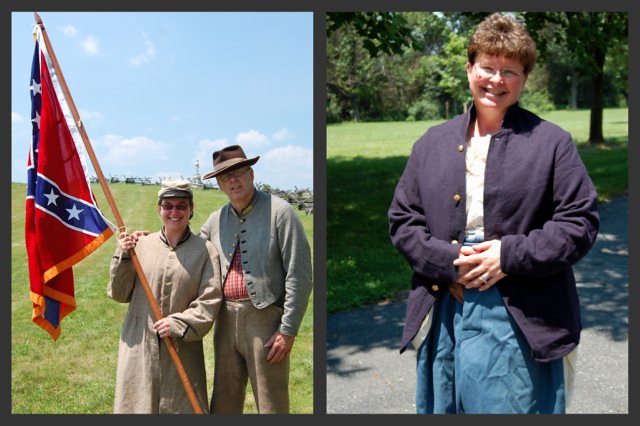
Janne sported Confederate Gray and carried the battle flag while I opted for Union Blue. As was true in the Civil War, families often were on opposing sides with brother fighting brother.
At the end of the day, while there was no clear cut tactical victor, the Union Army had forced General Lee and his Confederate Army to retreat back into Virginia- but at heavy cost to both sides. The Union and Confederate Armies combined suffered over 23,000 casualties that day making it the bloodiest day in American combat history. The ground was red with blood and the screams of wounded and dying soldiers could be heard across the valley.
Although the Civil War in general, and this battle in particular, created what has been described as "a legion of amputees," it also saw the birth of modern combat medical care. Dr. Jonathan Letterman, chief medical officer for the Army of the Potomac (Union), established an ambulance corps to evacuate wounded soldiers from the battle. He also established "triage"- a system of prioritizing the wounded based on the severity of their wounds, not by their rank as was the prior custom. Clara Barton, a Northerner, arrived at the infamous "Cornfield" (the bloodiest skirmish of the battle with 8,850 casualties) with a wagonload of medical supplies she personally collected and brought to "the front". She helped surgeons and comforted wounded soldiers of both armies. Dr. James Dunn, a surgeon at Antietam battlefield, later wrote about her, "In my feeble estimation, General McClellan, with all his laurels, sinks into insignificance beside the true heroine of the age, the angel of the battlefield." Clara Barton eventually went on to found the American Red Cross, an organization that today, among other things, still provides aid to combat soldiers and their families.
Even though there was no "winner" in this battle, it was a turning point in the war and gave the Union a strategic victory. The momentum of the Confederate Army was lost, international support shifted to the Union and the rest, as they say, is history.
Beautiful flowers now bloom all over the Antietam Battlefield... a reminder of God's goodness.
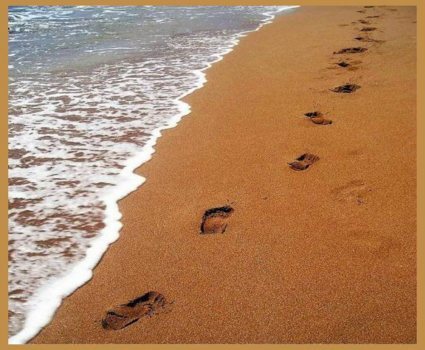
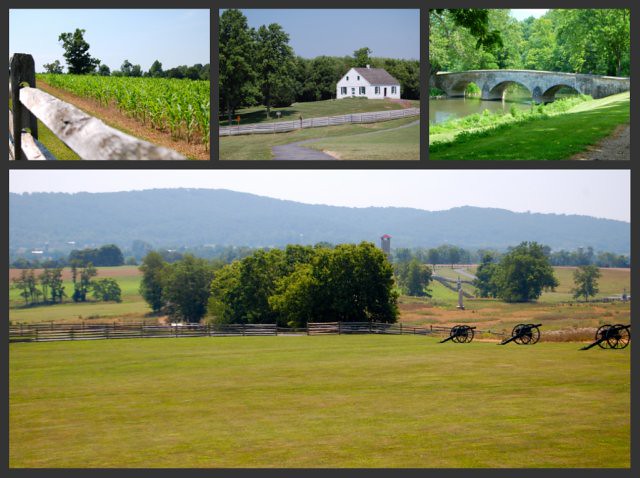
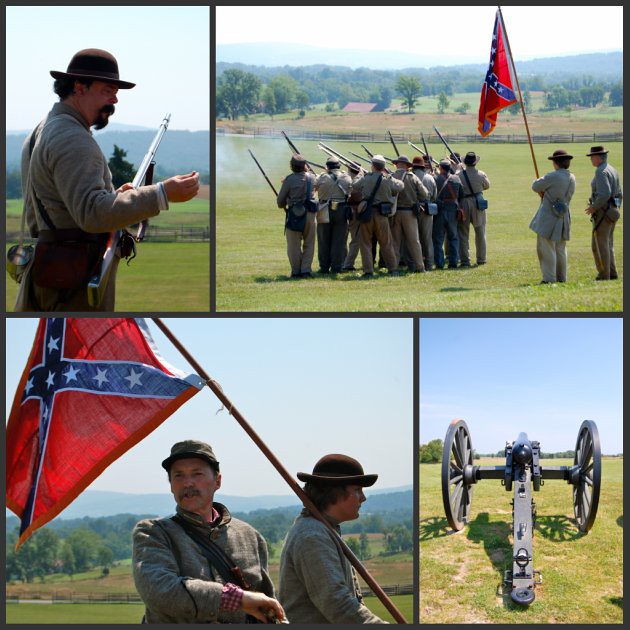
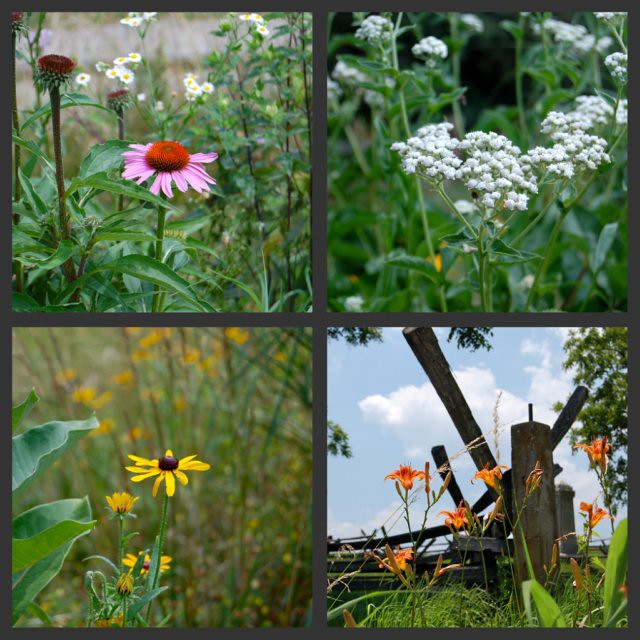
No comments:
Post a Comment